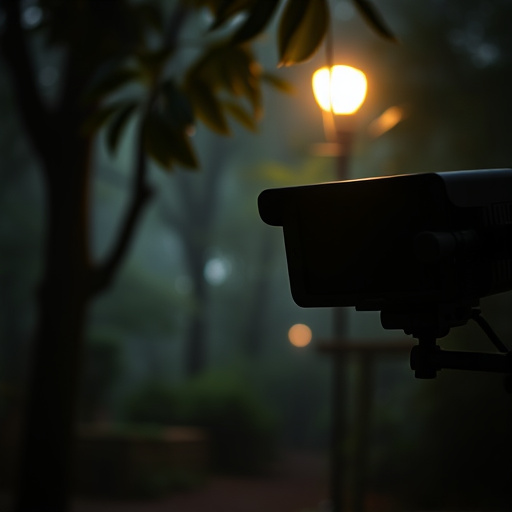When choosing a nanny cam location, opt for discreet areas like windows, doors, or cabinets with cuts. Prioritize cameras with extended battery life to avoid frequent replacements. Optimize battery health through efficient use, regular cleaning, and ventilation checks. Respect privacy laws by being transparent about surveillance and checking local regulations. Maintain optimal battery life through inspections, timely replacements, and low-battery alerts for continuous monitoring.
“Uncover the secrets of your home with our comprehensive guide on nanny cam concealment. Learn how to strategically place a motion-activated spy camera to ensure maximum privacy protection without raising suspicions. We’ll explore the latest technology, focusing on energy-efficient batteries for prolonged surveillance.
From ethical considerations and legal boundaries to maintaining clear footage, this article covers all aspects of setting up a hidden camera. Discover the art of discretion and stay one step ahead with our expert tips.”
- Choosing Discreet Nanny Cam Placement
- Understanding Motion Sensor Technology
- Optimizing Battery Life for Long-Term Use
- Ethical Considerations and Legal Limits
- Maintaining and Retrieving Hidden Footage
Choosing Discreet Nanny Cam Placement
When selecting a location for your nanny cam, discretion is key. Opt for spots that are out of plain sight but still offer good coverage of areas where your caregiver is most active. For instance, mount cameras near windows or doors, inside cabinets with subtle cuts or behind decorative items like mirrors or picture frames. These strategic placements ensure the camera captures crucial footage without becoming a noticeable intrusion.
Consider factors like field of view and angle to guarantee the motion-activated spy camera effectively monitors key areas. Additionally, choose a model with an impressive battery life, such as those boasting extended battery life, to avoid frequent replacements and ensure continuous surveillance.
Understanding Motion Sensor Technology
Motion sensors have revolutionized home security and surveillance, particularly with the advent of motion-activated spy cameras. These devices are designed to capture activity within a space by detecting movement, making them an excellent option for monitoring households. The technology behind them is quite simple yet effective; when a person or object moves within the camera’s range, it triggers the device to record video or take photos.
One of the key advantages of motion-activated cameras is their battery life. These cameras are often equipped with efficient sensors and powerful yet energy-saving processors, ensuring they can operate for extended periods on a single charge. This feature is crucial for continuous surveillance without the need for frequent battery replacements, making them a convenient and reliable choice for homeowners seeking discreet security solutions.
Optimizing Battery Life for Long-Term Use
To ensure your motion activated spy camera lasts for extended periods, optimizing battery life is paramount. This involves selecting a camera with an efficient power source and implementing smart conservation strategies. Many modern motion-activated cameras utilize rechargeable batteries, offering a cost-effective and eco-friendly alternative to disposable options. Regularly checking the battery level and using the camera during peak activity can significantly extend its operational lifespan. Additionally, adjusting sensitivity settings to avoid unnecessary activations can conserve energy.
Regular maintenance, including cleaning and ensuring proper ventilation, is crucial for prolonging battery health. It’s also beneficial to invest in spare batteries to have on hand, allowing you to swap them out when the primary battery requires recharging or replacement. By adopting these practices, you’ll ensure your motion-activated spy camera remains operational, delivering peace of mind for long-term monitoring without interruption.
Ethical Considerations and Legal Limits
While installing a nanny cam or motion-activated spy camera can provide peace of mind, it’s crucial to navigate the ethical considerations and legal limits surrounding this technology. Using hidden cameras in someone’s home raises privacy concerns, so transparency is key. Inform all parties involved—nannies, employees, and family members—about the presence of surveillance equipment to ensure compliance with privacy laws.
Legal boundaries vary by region, but generally, there are strict rules regarding consent and reasonable expectations of privacy. For example, many areas require explicit permission from all individuals being recorded, especially in private spaces like bedrooms. Moreover, the battery life of motion-activated cameras should be considered; a camera that continuously records without notification could violate privacy laws. Always review local legislation to ensure your use of a motion activated spy camera is legal and ethical.
Maintaining and Retrieving Hidden Footage
Maintaining a consistent battery life is crucial for motion-activated spy cameras, especially in households with dynamic routines. To ensure uninterrupted surveillance, regularly inspect and replace batteries as needed. Many modern devices offer low-battery alerts, making this process convenient. Additionally, consider using rechargeable batteries to save costs and reduce environmental impact.
Retrieving footage from concealed cameras is a seamless process thanks to their design for discreteness. Upon detection of motion, these devices automatically capture and store videos, which can be easily accessed through a mobile app or cloud storage. This feature allows you to monitor activities remotely and retrieve evidence when necessary, ensuring the safety and well-being of your family or property.
When strategically placing a motion activated spy camera, consider everyday household items as hiding spots to capture moments discreetly. By optimizing battery life and understanding ethical boundaries, you can ensure long-term surveillance without compromising privacy. Remember, responsible use involves respecting legal limits and maintaining footage securely. With these tips in mind, you’re well-equipped to make informed decisions regarding home security and surveillance.
